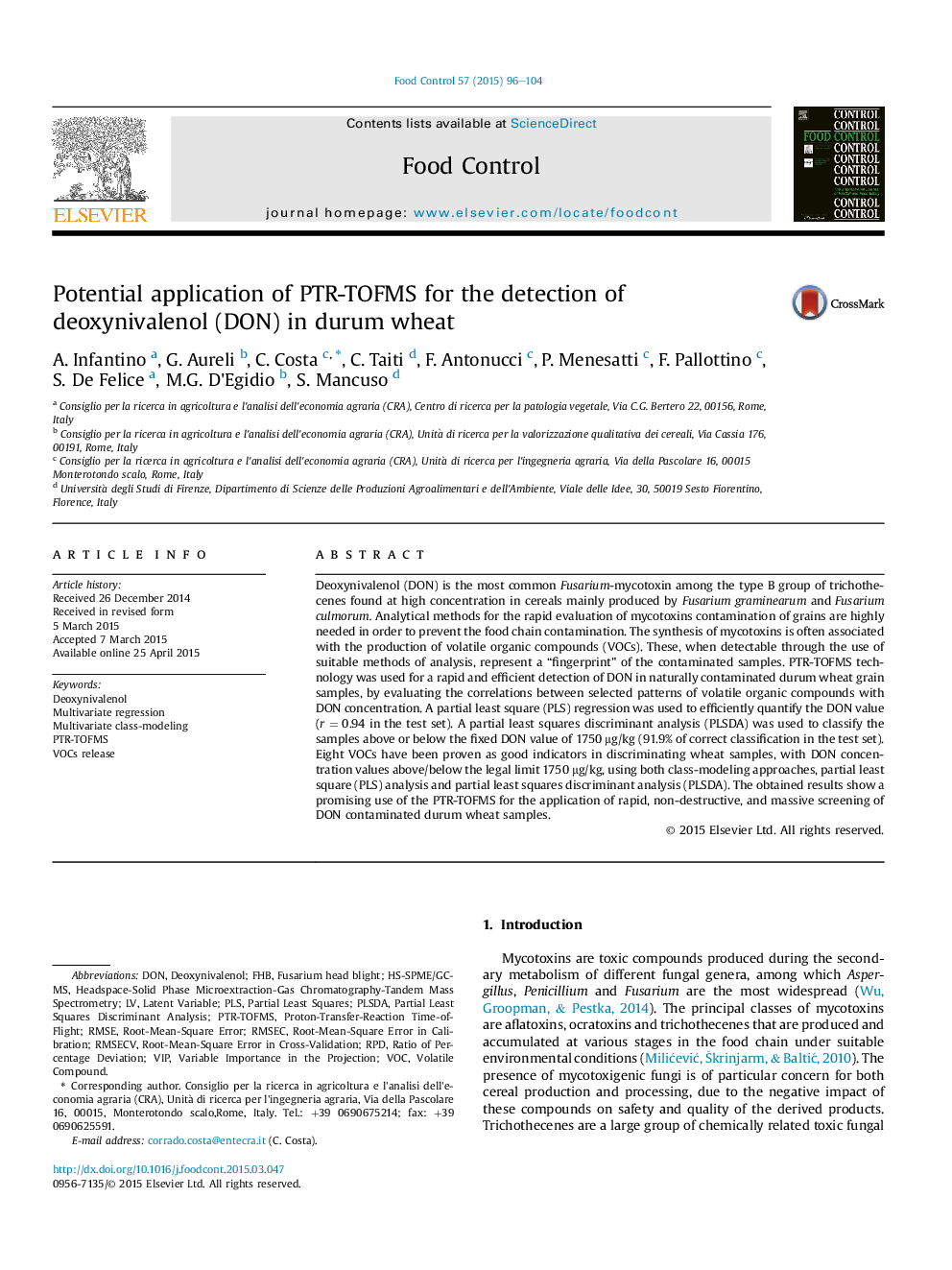| کد مقاله | کد نشریه | سال انتشار | مقاله انگلیسی | نسخه تمام متن |
|---|---|---|---|---|
| 6390704 | 1628405 | 2015 | 9 صفحه PDF | دانلود رایگان |

- PTR-TOFMS was used for a rapid discrimination among durum wheat grain samples contaminated with Deoxynivalenol.
- PLS was used to efficiently quantify the DON value (r = 0.94 in the test set).
- PLSDA was used to classify the samples above or below the fixed DON value of 1750 μg/kg.
- Eight VOCs have been shown as good indicators for discrimination.
Deoxynivalenol (DON) is the most common Fusarium-mycotoxin among the type B group of trichothecenes found at high concentration in cereals mainly produced by Fusarium graminearum and Fusarium culmorum. Analytical methods for the rapid evaluation of mycotoxins contamination of grains are highly needed in order to prevent the food chain contamination. The synthesis of mycotoxins is often associated with the production of volatile organic compounds (VOCs). These, when detectable through the use of suitable methods of analysis, represent a “fingerprint” of the contaminated samples. PTR-TOFMS technology was used for a rapid and efficient detection of DON in naturally contaminated durum wheat grain samples, by evaluating the correlations between selected patterns of volatile organic compounds with DON concentration. A partial least square (PLS) regression was used to efficiently quantify the DON value (r = 0.94 in the test set). A partial least squares discriminant analysis (PLSDA) was used to classify the samples above or below the fixed DON value of 1750 μg/kg (91.9% of correct classification in the test set). Eight VOCs have been proven as good indicators in discriminating wheat samples, with DON concentration values above/below the legal limit 1750 μg/kg, using both class-modeling approaches, partial least square (PLS) analysis and partial least squares discriminant analysis (PLSDA). The obtained results show a promising use of the PTR-TOFMS for the application of rapid, non-destructive, and massive screening of DON contaminated durum wheat samples.
Journal: Food Control - Volume 57, November 2015, Pages 96-104